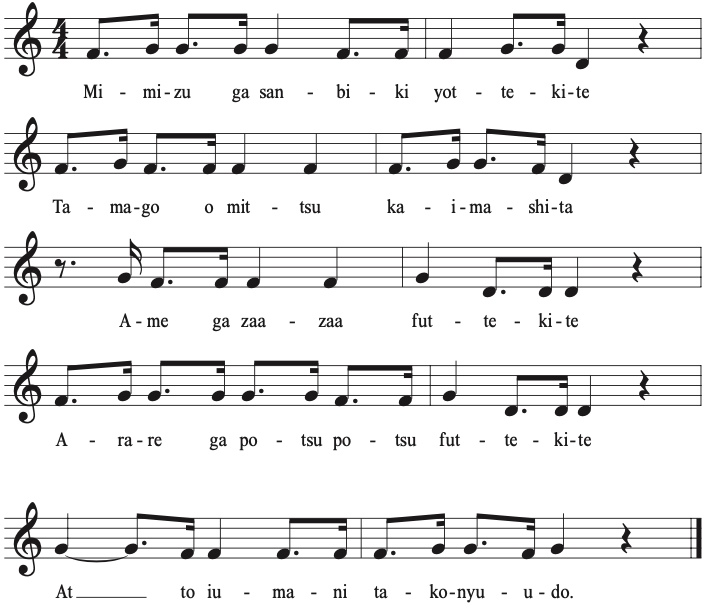SAMPLE LESSON
Ancestral Musical Culture Lesson
GRADE 3 LESSON
OBJECTIVES:
- Students will be able to learn the musical culture of their ancestors by interviewing their parents or older relatives.
- Students will be able to perform for the class what they have learned from the people they interviewed.
OBJECTIVE 1: Learning About Musical Culture
- Activity: Conduct Interviews
- Instructions: Students will create a set of questions to ask their parents or older relatives about their musical traditions. Encourage them to inquire about favorite songs, instruments, significant events, and any cultural stories associated with music.
- Materials: Interview questions, audio/video recording devices (optional).
OBJECTIVE 2: Performing Learned Material
- Activity: Prepare a Performance
- Instructions: Students will choose a piece of music or a story from their interviews to share with the class. This could be a song, a dance, or a presentation about a musical tradition.
Sample Student's Work
- Title: Tako-Nyuudo (An Octopus)
- Song Type: Ekaki Uta (Japanese Drawing Song)
- Shared by a Third Grader
- Source of Information: Mom born in Japan
- Language: Japanese
- Collected and transcribed by Miriam B. Factora, Ph.D.
Ekaki Uta: The Japanese Art of Drawing and Singing

ENGLISH TRANSLATION
AN OCTOPUS
Three worms came by
And bought 3 eggs
It started raining hard
And started hailing
In no time, there is an octopus!

Ekaki Uta, which literally translates to “draw and sing,” is a cherished Japanese tradition that beautifully intertwines art and music. This practice involves creating songs that guide individuals through the steps of drawing their favorite characters, blending creativity with rhythm. While some of the songs may not be traditional, the concept itself is deeply rooted in Japanese culture.
During my years of teaching in Japan, I became captivated by this unique educational approach. Unlike many other cultures, where the combination of drawing and music might be uncommon, Ekaki Uta provides a dynamic way to engage students in the creative process. Inspired by this tradition, I dedicated an entire unit to exploring it, allowing my students to immerse themselves in the joy of both singing and drawing. I encouraged them to interview their families, relatives, and friends to gather both traditional and contemporary drawing songs. To add an extra layer of challenge and excitement, I also asked them to create their own songs to accompany their artistic endeavors. This exercise not only helped them hone their creative singing and drawing skills but also provided an outlet for expressing their passion for their favorite characters.
In my recent teaching experience in California, a memorable moment arose when one of my Japanese students shared the “TAKO-NYUUDO” (Octopus Drawing Song). This was a wonderful opportunity for my culturally diverse group of students to learn about this enriching tradition. We had an incredible time together!
My music classes were filled with laughter and creativity as my students sang their hearts out. It was a truly memorable and enriching experience, fostering a sense of community and celebrating this precious tradition—one that I will always cherish.
